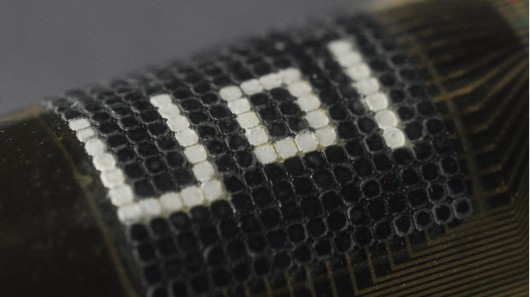
A new device developed at the University of Houston can automatically sense its surroundings and blend into them in a matter of seconds, imitating the behavior of squids and other marine creatures. Once it is perfected, the prototype could have interesting applications for the military, or even make its way into consumer technology.
Like all cephalopods, squids can change the color, opacity and reflectivity of their skin at a moment's notice to hide from predators, attract a mate or warn off the competition. They are able to do so because their skin contains several layers of specialized cells, which they activate by tightening their muscles when needed.
Assistant professor Cunjiang Yu and colleagues at the University of Houston set out to replicate this remarkable natural phenomenon in the lab. The result was a prototype of a flexible, pixelated artificial "skin" that can change its color based on its surroundings in a matter of seconds and without human intervention.
The device is a grid of 16 by 16 pixels, each packed with actuators, light sensors, reflectors and color-changing materials that act as the corresponding cell types found in cephalopods. Unlike previous systems, each pixel is able to change color in a completely autonomous way based on its surroundings, without requiring manual inputs of any kind.
Light detectors inside the device sense the color of their surroundings. When one of the pixels in the grid needs to change color to camouflage with the environment, the light detectors send a signal to a corresponding diode, which immediately heats up the area. The heat activates a thermochromatic material – that is, a material which changes color as it is heated – and as a result, the pixel also changes color.
For the time being, the prototype is competing only in spirit with the astounding capabilities of cephalopods, since all these pixels are able to do is change from black to white and back. However, Yu says his device could be designed to work in the full color spectrum, and although it is currently only one square inch in size, he also says it can be easily scaled up.
The eventual goal of this research is to build adaptive and flexible sheets that can wrap around solid objects and quickly change their appearance as needed. This could have important applications in military defense, but also, further down the line, in wearable electronics, clothing, or other consumer products.

 Previous page
Previous page Back to top
Back to top







